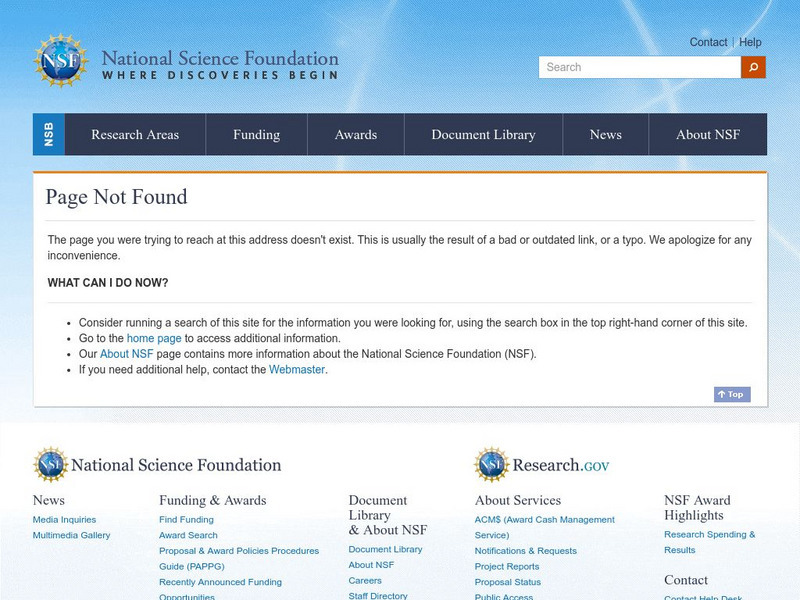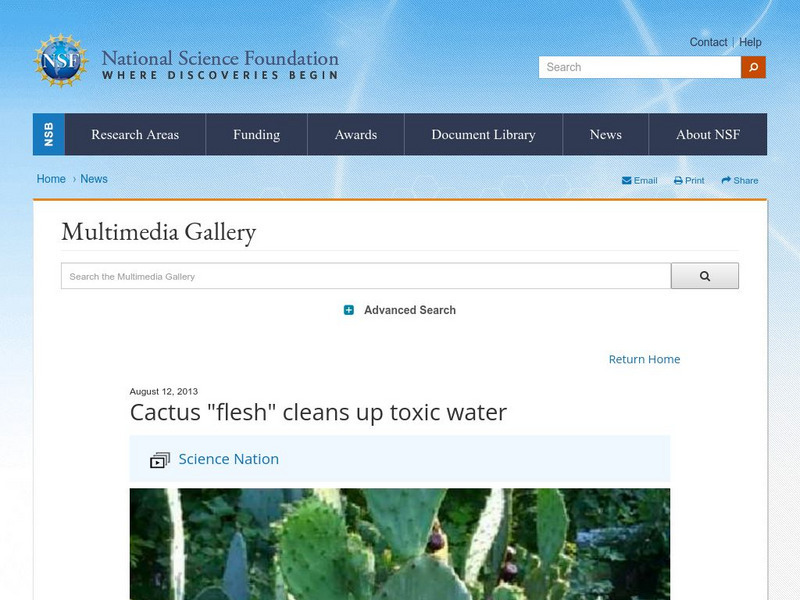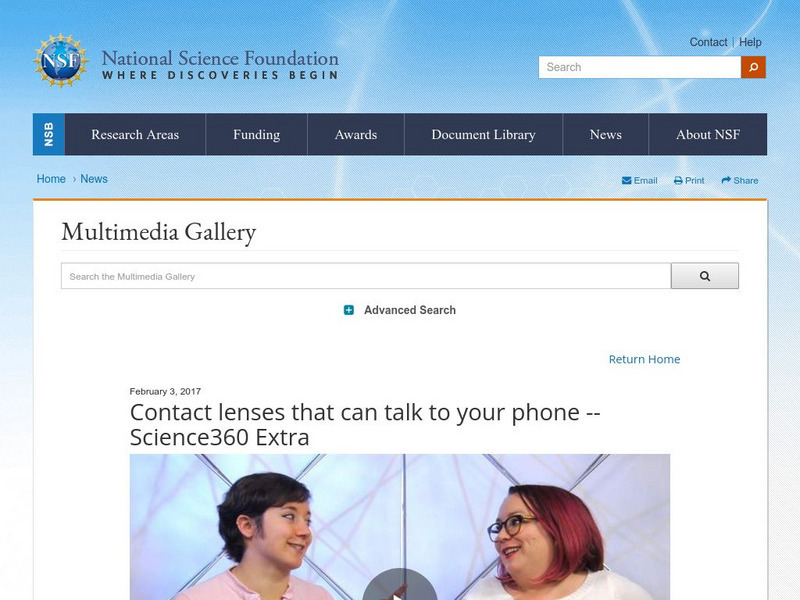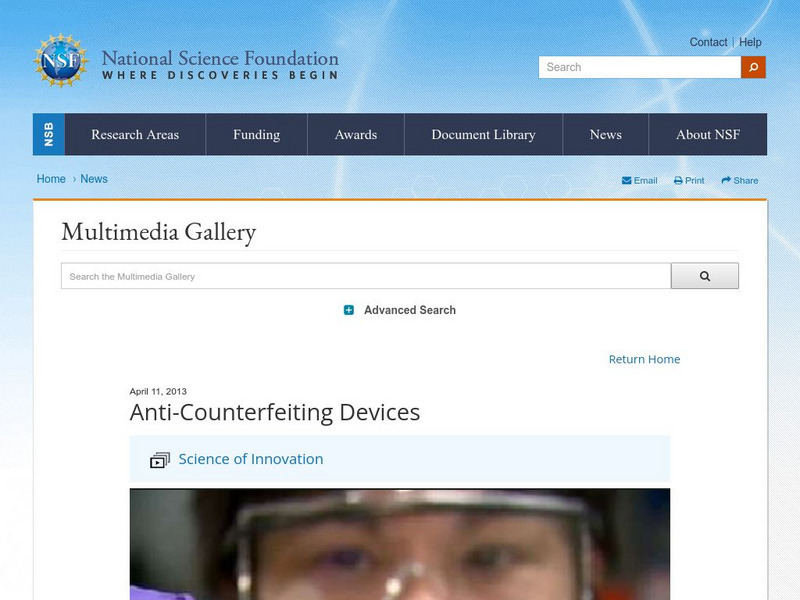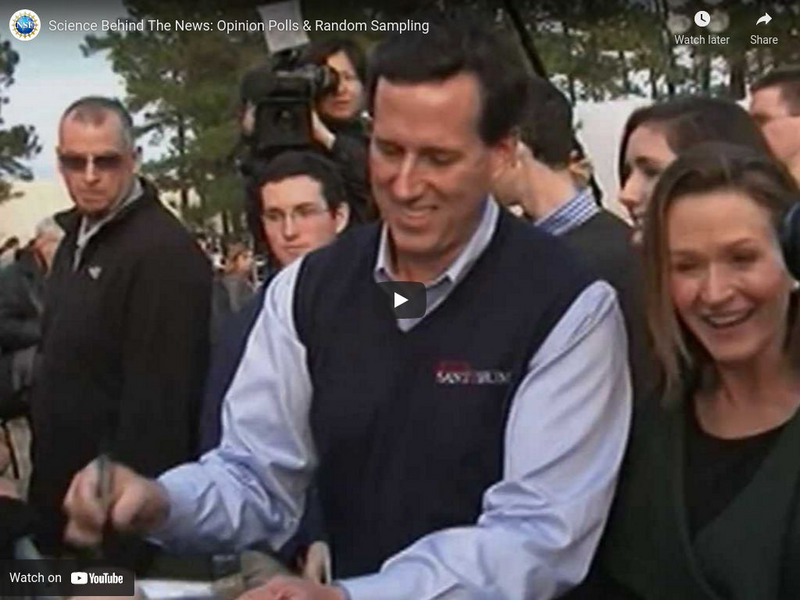Hi, what do you want to do?
National Science Foundation
National Science Foundation: Spherical Nucleic Acids
An overview of how the properties of Spherical Nucleic Acids make them favorable for therapeutic treatments and medical diagnostics. [3:41]
National Science Foundation
National Science Foundation: Chance Discoveries: Kevlar
Richard Engel tells the story of lab work done in 1965 by DuPont chemist Stephanie Kwolek that unexpectedly produced Kevlar, a lightweight fiber five times stronger than steel. [4:06]
National Science Foundation
National Science Foundation: Turning Digital Information Into Braille for the Visually Impaired
Polymer Braille Inc. is developing a mechanical Braille device that uses polymer-based, single-dot actuators to enable visually impaired people to access digital information on a mobile tablet computer. [2:10]
National Science Foundation
National Science Foundation: Turning the Wonders of Science to the Service of Man
The National Science Foundation (NSF) celebrates its 66th year of funding groundbreaking science and engineering. [1:26]
National Science Foundation
National Science Foundation: Science of Innovation: Using Viruses to Make Batteries
MIT researcher, Angela Belcher uses viruses engineered in her laboratory to form nano-scale wires for tiny batteries that could eventually be used to produce a wide range of electronics at a lower cost. [5:30]
National Science Foundation
National Science Foundation: Science of Innovation: Origami Structures
To engineer Mary Frecker of Pennsylvania State University, origami holds the future for designing tools that could be used in fields such as medicine and space exploration. [5:55]
National Science Foundation
National Science Foundation: When Nature Strikes: Wildfires
Janice Coen at the National Center for Atmospheric Research is studying how weather and fire interact in order to develop a wildfire prediction system to forecast fire behavior. [6:12]
National Science Foundation
National Science Foundation: Alaska Mountain Glaciers Retreating Due to Climate Change
University of Maine paleoclimatologist scientists are working to reconstruct the climate history of this area over the last thousand years. They're researching the relationship between the temperatures and precipitation rates, and the...
National Science Foundation
National Science Foundation: Paraplegic Will Walk Again With Exoskeleton at the World Cup
Dr. Miguel Nicolelis and the Walk Again Project have built an exoskeleton that will allow paraplegics to walk again. [5:04]
National Science Foundation
National Science Foundation: New Models to Explore Earth's Interior
NSF-funded researchers at Arizona State University have developed new simulations depicting the dynamics of deep earth. [0:30]
National Science Foundation
National Science Foundation: Cactus 'Flesh' Cleans Up Toxic Water
See University of South Florida engineering professor Norma Alcantar and her team are using the flesh from Prickly Pear cacti, called mucilage, to clean up oil and other toxins from water. [2:32]
National Science Foundation
National Science Foundation: It's a Twister of Data
Charlie and Jordan talk about visualizations that may reduce the false alarm rate for tornado prediction. [2:22]
National Science Foundation
National Science Foundation: Brain Prints Reveal Children's Reading Difficulties
Cognitive neuroscientist Sarah Laszlo and her team at Binghamton University are developing a test designed to diagnose reading difficulties early on. [4:01]
National Science Foundation
National Science Foundation: Contact Lenses That Can Talk to Your Phone
Jordan and Charlie investigate interscatter communications which lets devices like brain implants, contact lenses, and credits cards talk to everyday devices such as smartphones and watches, and could even revolutionize management of...
National Science Foundation
National Science Foundation: Multimedia Gallery
Video-sharing site, sponsored by the National Science Foundation, provides access to the latest science, engineering, technology, and mathematics news from around the world in video format. With videos contributed by research scientists,...
National Science Foundation
National Science Foundation: Science of Innovation: Anti Counterfeiting Devices
Scientists are researching methods of embedding biomarkers into products to identify them as real as opposed to counterfeit items, using nanotechnology. [5:50]
National Science Foundation
National Science Foundation: Science of Nhl Hockey: Hockey Geometry & Science
This 10-part video series explores the science and math behind professional hockey.
National Science Foundation
National Science Foundation: Science of Nhl Hockey: Force, Impulse & Collisions
The movement of a puck in an NHL hockey game must follow the rules of physics, which involve the concepts of force, impulse and collisions. [5:05]
National Science Foundation
National Science Foundation: Science Behind the News: Opinion Polls & Random Sampling
Explains the science behind the public opinion polls and random sampling that are used during political elections, and how they can be used to predict how the wider population might vote. [4:07]
National Science Foundation
National Science Foundation: Engineering Innovative Seismic Retrofits That Don't Break the Bank
Researchers at the state-of-the-art Structural Engineering and Materials Laboratory at the Georgia Institute of Technology are using a full-scale model building to test new ways to protect structures from earthquakes and potentially save...
National Science Foundation
National Science Foundation: Tracking Titanosaurs
National Science Foundation-funded paleontologists have identified a new species of titanosaurian dinosaur. [0:43]
National Science Foundation
National Science Foundation: Science of the Winter Olympics: Slapshot Physics
One of the most popular team sports in the Winter Olympics is hockey. More than just a physical game, for scientists, it's a showcase for physics on ice - especially when it comes to the slapshot. An Olympian and two scientists break...
National Science Foundation
National Science Foundation: Science of the Winter Olympic Games: Science of Snow
Snow is an essential part of the Winter Olympics. A former Winter Olympian, who is also a glaciologist, and a chemist discuss how humidity and temperature help form snow. [4:40]
National Science Foundation
National Science Foundation: Green Revolution: Solar
At Arizona State University, students make and test new materials that can be used to build better and more versatile photovoltaic solar cells, and test solar cells to see how the shape of the surface affects the cell's energy...






